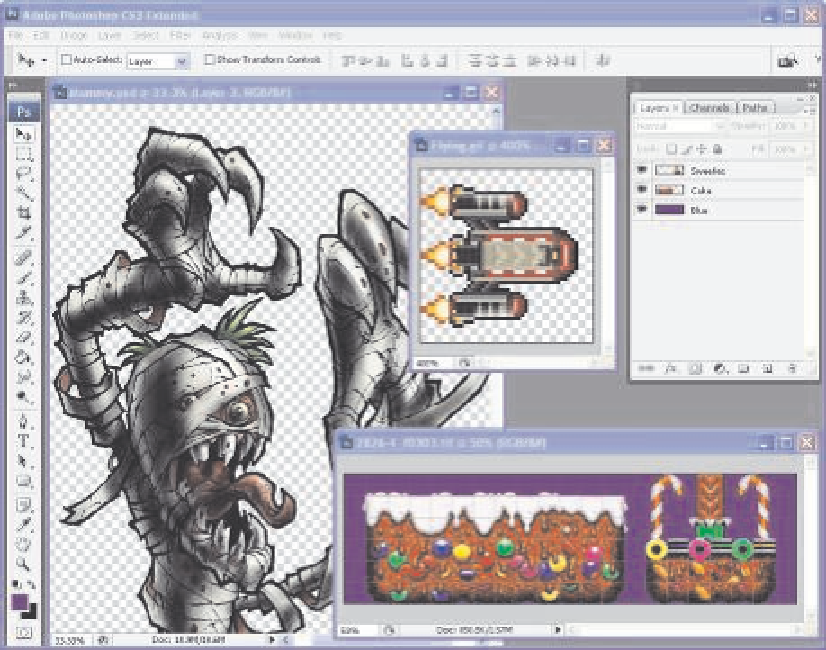Game Development Reference
In-Depth Information
Figure 10-8.
Photoshop CS3 is a serious artist tool. Paint.NET and Gimp are free alternatives that contain
some of the same features
Animations
The mechanics of character movement and animation need to be considered at this point, too.
This is going to be a 2D game with a retro feel, but we want it to be a lot more crisp than the low-
resolution games of the past. Sprites were traditionally drawn by hand, pushing pixels about in a
2D art package such as Deluxe paint, but animating higher-resolution characters in this way is a
job for an army of Disney animators, not a small team of game developers. That's why we decided
to use Anime Studio (Debut edition) to create our animations. Anime Studio provides a
hierarchical animation system similar to the ones in 3D animation packages used in modern
films and games (see Figure 10-9). That means you can create animations by posing the
character in different positions and the package creates the frames in-between for you.
So working back from our animation technique, we know that the characters will need to be
created from separate body components: torso, upper and lower arms, upper and lower legs, and
heads. These parts will be linked together in an intuitive biological way; lower arm connected to
the upper arm at the elbow, upper arm connected to the torso at the shoulder, and so forth.
Therefore, we must split character art into all these composite parts. These are all scaled to
ensure all arms and legs and other parts are proportioned correctly, before being saved as
separate pieces of art. We can then pass them onto the animator to be “rigged” (attaching the
animation hierarchy to the images) and animated in Anime Studio.

Search WWH ::

Custom Search